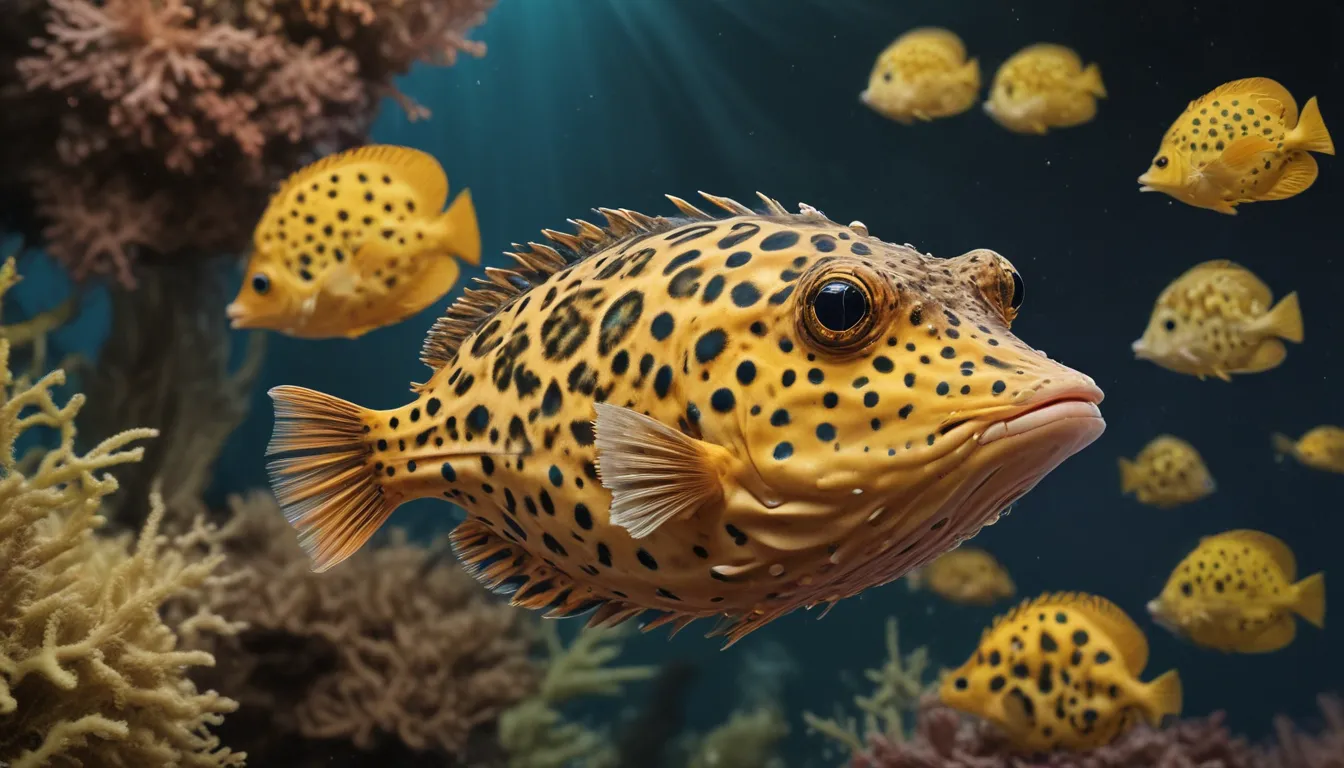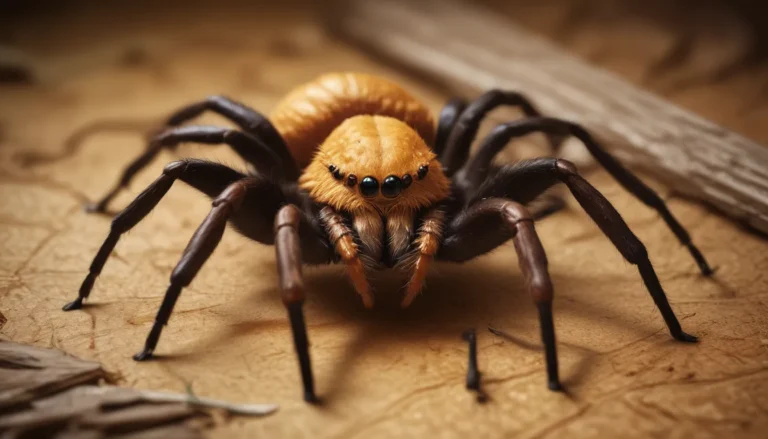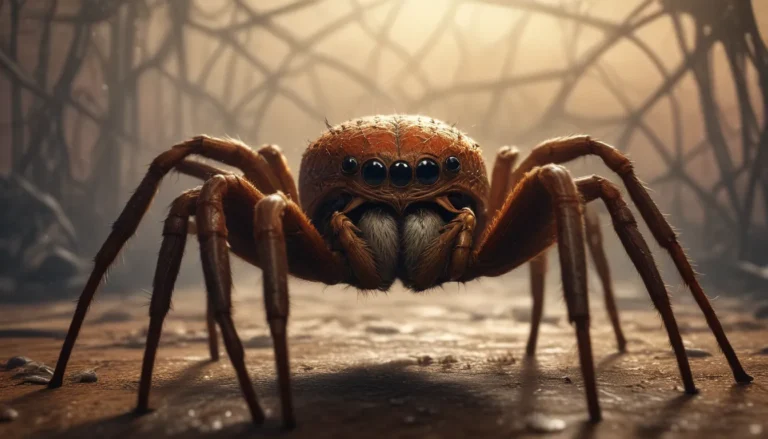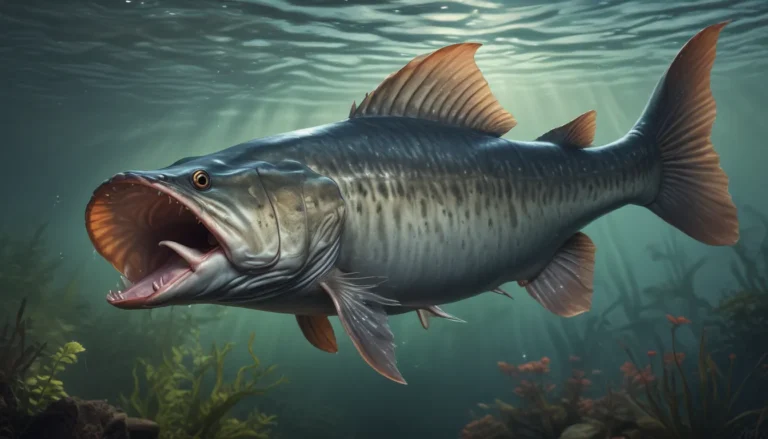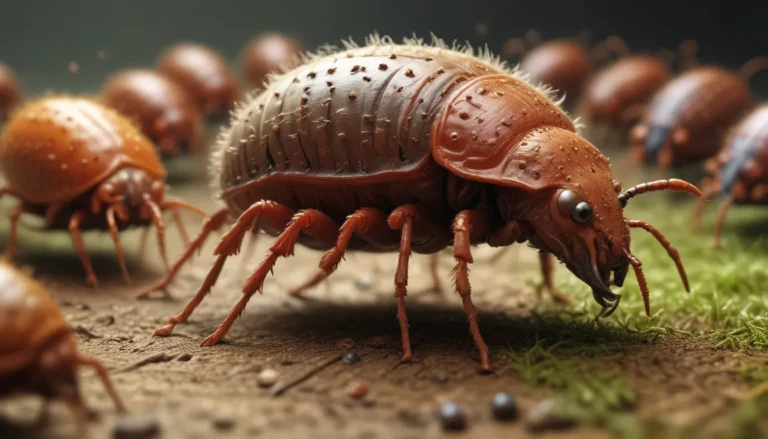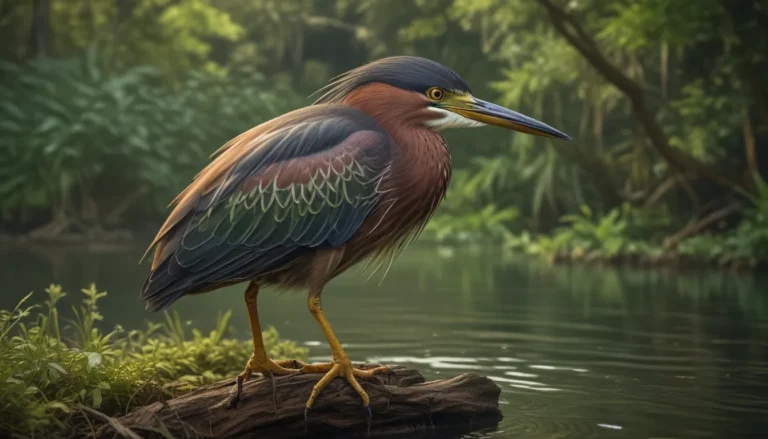The pictures we use in our articles might not show exactly what the words say. We choose these pictures to make you interested in reading more. The pictures work together with the words but don’t take their place. The words still tell you the important facts.
The underwater world is a treasure trove of unique and captivating marine creatures, each with its own set of extraordinary features. Among these fascinating creatures is the boxfish, a small fish with a box-like shape and vibrant colors that has captured the imagination of scientists and nature enthusiasts alike.
In this article, we will take a deep dive into the world of boxfish and uncover 18 intriguing facts about these remarkable creatures. From their distinctive appearance and remarkable defensive mechanisms to their important role in coral reef ecosystems, boxfish are truly a marvel of nature.
So, get ready to explore the enchanting world of boxfish and discover what makes these creatures so special!
Understanding Boxfish: A Unique Marine Creature
Boxfish, belonging to the family Ostraciidae, are small marine creatures known for their distinctive box-like shape and vibrant colors. These fascinating fish are commonly found in tropical and subtropical waters around the world, adding a splash of color to underwater landscapes.
The Box-like Structure: A Protective Adaptation
The name "Boxfish" is derived from their box-like shape, which is a result of fused bony plates that act as an exoskeleton, providing protection and resilience against predators. This unique structural adaptation sets boxfish apart from other marine species, showcasing nature's creative ingenuity.
Vibrant Colors: Nature’s Warning Sign
Boxfish are adorned with bright and striking colors, including shades of yellow, orange, black, and blue. These vibrant hues serve as a warning to potential predators, signaling that the boxfish is toxic and should be avoided. It's a striking example of how nature uses color as a defensive mechanism in the animal kingdom.
The Unique Defense Mechanism of Boxfish
When threatened, boxfish have a potent weapon in their arsenal: a highly toxic substance called ostracitoxin. This toxic secretion acts as a powerful deterrent to predators, making them think twice before considering the boxfish as a potential meal. It's a remarkable adaptation that underscores the boxfish's ability to defend itself in the underwater world.
Slow Swimmers with Camouflage Abilities
Despite their toxic defense mechanism, boxfish are not speed demons in the water. They have a slow and deliberate swimming style, relying on their distinct shape and bony plates for protection. Additionally, boxfish possess incredible camouflage abilities, blending in with their surroundings by changing their coloration and patterns. This ability to disappear into their environment helps them evade predators and ambush their prey effectively.
Boxfish Diet: Herbivores of the Underwater World
Boxfish have a primarily herbivorous diet, feeding on algae and small invertebrates found on coral reefs. Their specialized teeth are adept at scraping off seaweed, sponges, and crustaceans from rock surfaces, showcasing their adaptation to their unique dietary preferences. As crucial herbivores, boxfish play a vital role in maintaining the delicate balance of coral reef ecosystems by controlling algae growth.
Boxfish in Home Aquariums: Challenges and Considerations
While boxfish are fascinating creatures, they require specific conditions and care to thrive in a home aquarium. Their unique dietary needs, sensitivity to water quality, and potential to emit toxins make them more challenging to keep compared to other fish species. Responsible pet ownership is essential when considering boxfish as aquarium residents to ensure their well-being and longevity.
The Reproductive Behavior of Boxfish
Boxfish have a slow reproductive rate, with females laying only a few hundred eggs at a time. These eggs are released into the water column, where they must fend for themselves, facing various challenges for survival. The reproductive habits of boxfish highlight the delicate balance of nature and the challenges faced by these intriguing marine creatures in sustaining their populations.
Boxfish as Ecosystem Players: Guardians of Coral Reefs
Boxfish play a crucial role in the health and balance of coral reef ecosystems by controlling algae growth. Without the presence of boxfish, unchecked algae growth can overrun and harm coral reefs, disrupting the delicate symbiotic relationships that thrive in these underwater habitats. Protecting boxfish populations is essential to preserving the biodiversity and ecological integrity of coral reef environments.
Boxfish and the Aquarium Trade: Balancing Conservation and Demand
The striking appearance of boxfish makes them highly sought after in the aquarium trade. However, it is essential to source boxfish responsibly from captive breeding programs to prevent overexploitation of wild populations. Sustainable practices and conservation efforts are crucial to ensuring the continued existence of these captivating marine creatures for future generations to appreciate and admire.
Conservation Challenges: Preserving Boxfish Populations
Boxfish populations worldwide are facing threats from overfishing and habitat destruction, highlighting the need for conservation initiatives to protect these unique creatures. Implementing sustainable fishing practices and safeguarding their natural habitats are essential steps in ensuring the survival of boxfish and maintaining the biodiversity of marine ecosystems.
Exploring the Relatives: Pufferfish and Boxfish Connections
Boxfish are closely related to pufferfish, sharing similarities such as the ability to inflate their bodies when threatened. However, unlike pufferfish, boxfish do not have the capacity to expand their bodies to a larger size, showcasing the distinct adaptations and behaviors of these two related marine species. Understanding the connections between pufferfish and boxfish adds depth to the exploration of marine biodiversity and evolutionary relationships.
The Lifespan of Boxfish: Endurance Under the Sea
Boxfish have a relatively long lifespan compared to other tropical fish species, with individuals in the wild living up to 10 years or more under optimal conditions. Their endurance and longevity in the marine environment reflect their adaptive qualities and resilience in the face of various challenges, making them a testament to the wonders of aquatic life.
Courtship Rituals: The Mating Dance of Boxfish
During the mating season, male boxfish engage in elaborate courtship rituals involving displays of color, chasing, and occasional headbutting. These courtship dances serve to establish dominance, attract mates, and ensure successful reproductive outcomes. The intricate behaviors of boxfish during mating rituals provide insights into their social dynamics and reproductive strategies in the underwater world.
Traditional Perspectives: Boxfish in Medicine and Culture
In certain cultures, specific parts of the boxfish are believed to possess medicinal properties, adding a cultural dimension to their significance. However, the utilization of boxfish in traditional medicine should be approached with caution to prevent overexploitation and protect their populations. Exploring the cultural significance of boxfish enhances our understanding of their broader ecological and societal contexts.
Boxfish as Indicator Species: Guardians of Underwater Health
Boxfish serve as vital indicator species for assessing the health of coral reef ecosystems. Their population dynamics and behaviors provide valuable insights into the overall well-being of these delicate underwater habitats, serving as sentinels for detecting changes and disturbances in marine environments. Monitoring boxfish populations can help scientists and conservationists track the health of coral reefs and implement necessary measures for their preservation.
Evolutionary Marvels: Adaptations of Boxfish Over Time
Boxfish have evolved fascinating adaptations over millions of years to survive in their marine environments. Their unique shape, vibrant colors, and specialized defense mechanisms are testaments to their evolutionary journey and ability to thrive in diverse underwater ecosystems. Studying the evolutionary marvels of boxfish offers a glimpse into the dynamic processes that shape life in the ocean and the resilience of these captivating marine creatures.
In conclusion, boxfish are truly remarkable creatures that showcase the beauty and complexity of marine life. Their unique characteristics, from their box-like structure to their vibrant colors and intricate behaviors, make them a fascinating subject of study and admiration. By appreciating the wonders of boxfish and their role in coral reef ecosystems, we gain a deeper appreciation for the interconnectedness of life underwater and the importance of conservation efforts to protect these extraordinary creatures for future generations to cherish and enjoy.
FAQs
Q: What do boxfish eat?
A: Boxfish primarily feed on small invertebrates such as worms, crustaceans, and mollusks, using their specialized mouths to pick and graze on organisms found on rocks and coral reefs.
Q: How long do boxfish live?
A: The lifespan of a boxfish varies by species, with individuals in the wild living anywhere from eight to fifteen years on average. With proper care in captivity, they may live even longer.
Q: Are boxfish venomous?
A: Yes, many species of boxfish are venomous, producing toxic substances from specialized glands for defense. Handling boxfish with care is important due to the potential harm their venom can cause.
Q: How do boxfish change color?
A: Boxfish change color through specialized pigment cells called chromatophores in their skin, expanding or contracting these cells to alter their coloration. This color change serves various purposes in communication, camouflage, and warning signals.
Q: Are boxfish affected by climate change?
A: Like many marine species, boxfish can be impacted by climate change, including rising water temperatures and ocean acidification. These environmental changes can affect their habitat, food sources, and overall well-being, emphasizing the importance of conservation efforts to safeguard their existence.
By exploring the enchanting world of boxfish and delving into the intricacies of their biology, behaviors, and ecological roles, we gain a deeper appreciation for these extraordinary marine creatures. From their striking appearances to their vital contributions to coral reef ecosystems, boxfish offer a glimpse into the diverse and interconnected web of life that thrives beneath the ocean's surface. As we continue to study and protect boxfish and their habitats, we ensure a brighter future for these captivating creatures and the intricate underwater ecosystems they call home.
